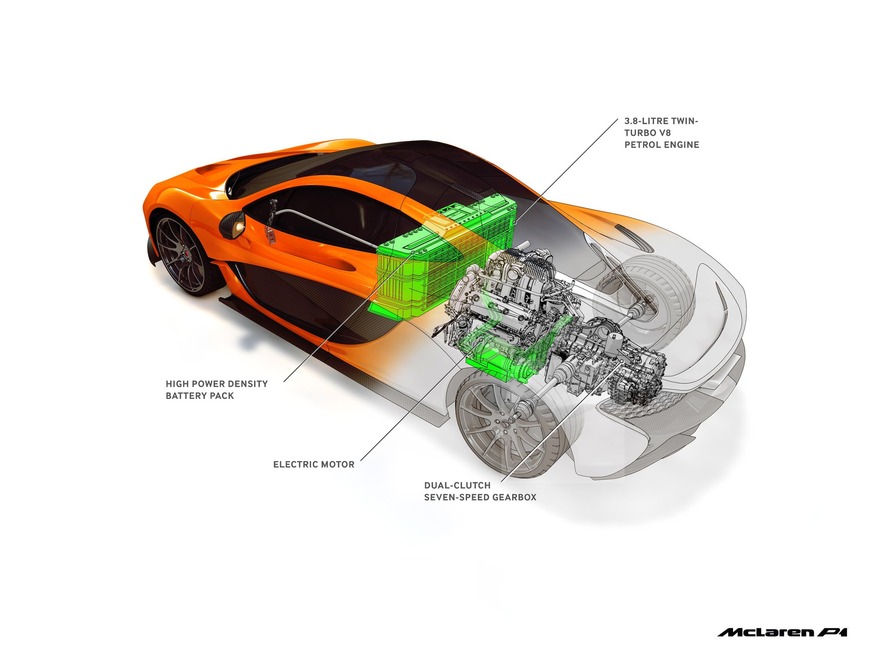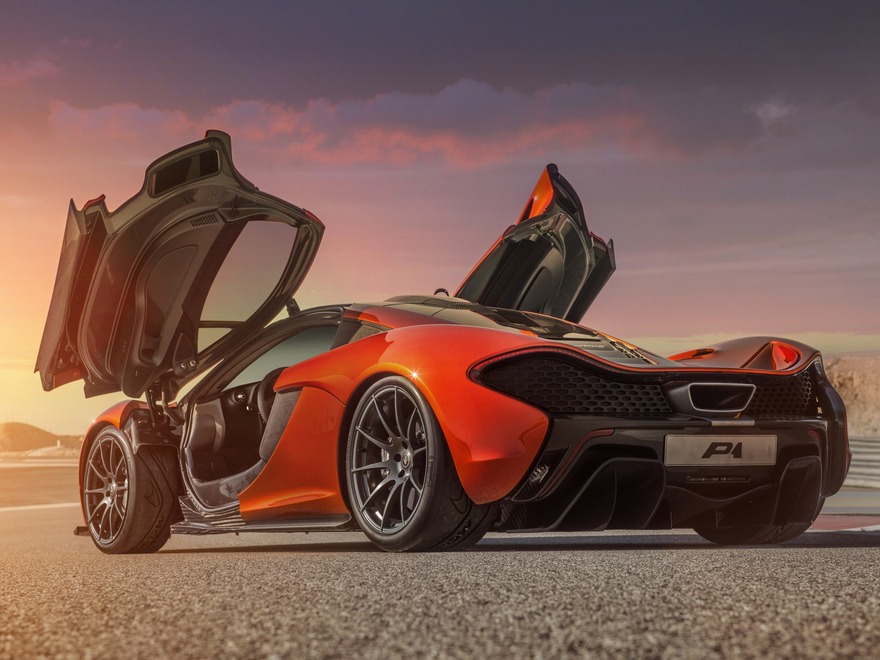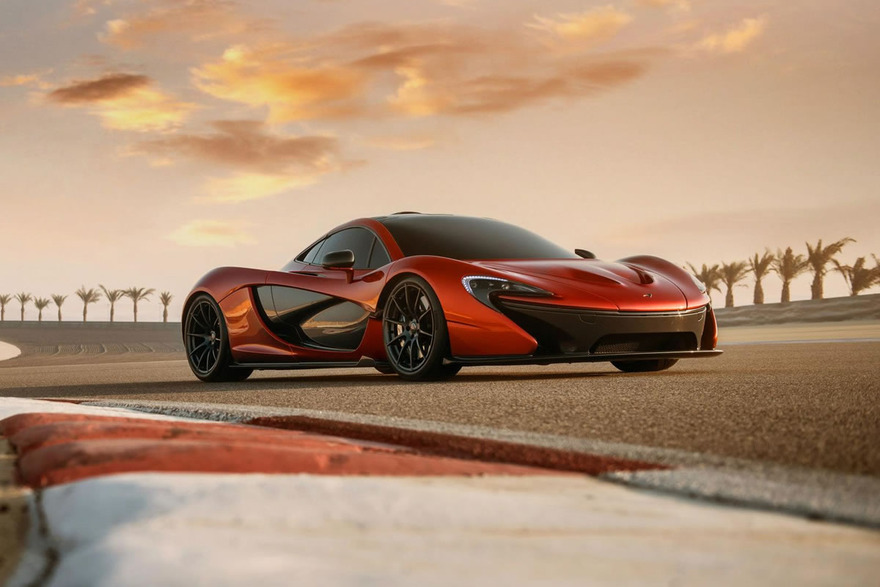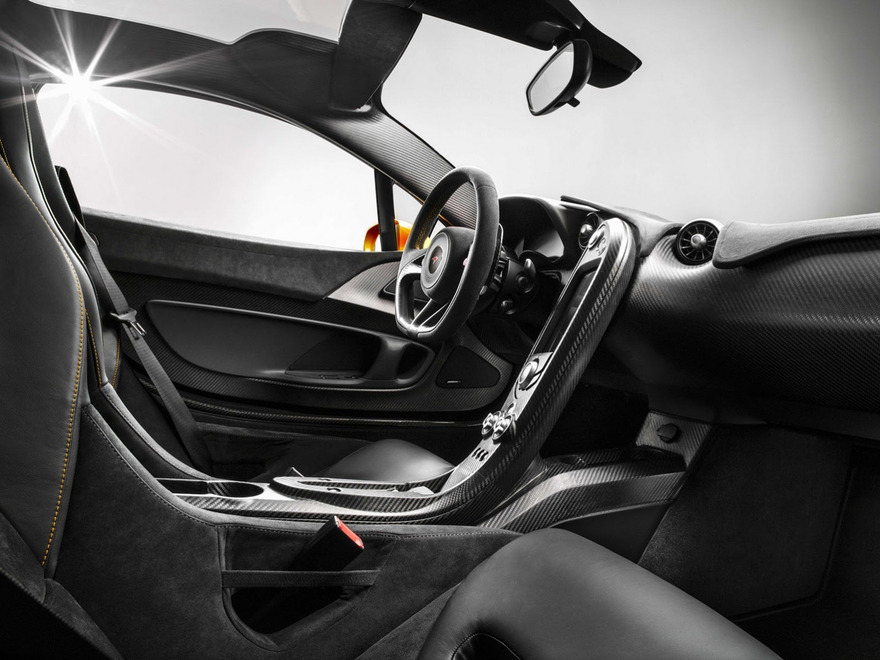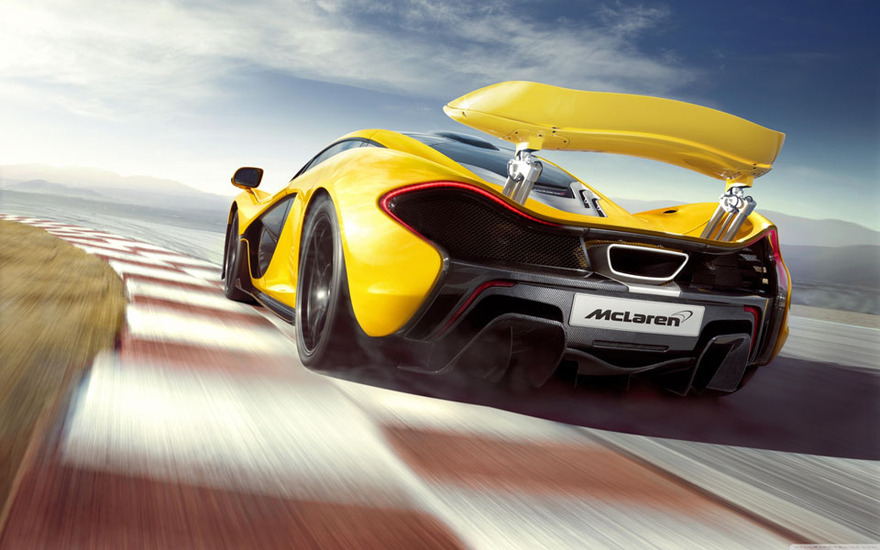McLaren F1 used to be the fastest supercar in the world. After ceasing its production in 2005, the British car manufacturing company McLaren Automotive set a goal to build the best sports car ever. Rather ambitious. They decided to design a car which could be as fast on a track as a GT3 race car. It should also be comfortable and practical for driving on public roads.
This supercar was to be the face of the brand up to 2020 or so until the launch of production of the next-generation company’s flagship. The work on developing the new concept began in 2009 and in March 2013 the company presented the all-new hybrid McLaren P1 at the Geneva Motor Show. It’s a “transformer” car which can turn out of the road sports car into the track racing supercar in 40 seconds — you drive it yourself to the track, push the button and here you are taking part in a race.
Antony Sheriff, McLaren’s managing director, stated that P1 is the most technologically perfect car on our planet.
The style of McLaren is unmistakable — it features aerodynamic effectiveness, great visibility, high-density configuration, compact size and low weight. McLaren P1 is a two-door, two-seat rear-wheel drive coupé built on the base of MP4–12C and fitted with dual-clutch 7-speed gearbox, upgraded engine and active aerodynamic systems.
POWERTRAIN
The hybrid powertrain of McLaren P1 comprises a petrol engine, an electric engine and a battery pack. All in all it produces 916 hp and 900 Nm of torque. This “cocktail” emits only 200 g/km of carbon dioxide (compare to 279 g/km emitted by MP4–12C).
The engineers from McLaren decided not to use V10 and V12 engines but upgraded the V8 (M838T) instead. In their opinion M838T better meets the efficiency standards. It’s fuel-efficient, light enough and produces less CO2 emissions. The motor construction is 90% new — 3.8-litre twin-turbo heavy-duty petrol engine, referred to as M838TQ, is fitted with a unique block designed for an electric motor.
The electric motor features Instant Power Assist System (IPAS) which releases all power produced by the electric engine in just one moment. Electric motor adds efficiency, provides with instant torque at low rpm and removes any impression of turbo lag. It makes the powertrain feel like a naturally-aspirated engine and speeds up gear change.
The battery weighs 96 kg and is mounted behind the passenger seat. In combined mode, McLaren P1 can travel up to 20 km in electric-only power and reach the speed of over 160 km/h. That is enough for most city journeys in Europe. It takes two hours to fully charge the battery via plug-in charger. The car also features “pit lane charging” — after pushing the Charge button on the dashboard the petrol engine will “pump up” the battery in 10 minutes.
SUSPENSION AND CHASSIS
The overall vehicle weight is 1400 kg. Unique body construction consists of five parts: front clamshell, rear clamshell, front bonnet and the doors. The supercar rests on MonoCage monocoque (100 kg) and chassis (100 kg) — all made from carbon fibre. The car is fitted with carbon ceramic brakes, adaptive damping and traction control system with five operating modes.
Four suspension settings, including E-mode, Normal, Sport and Track modes, can be selected on a mini-handle while the Race mode is button-activated switching all necessary car systems into race behaviour.
In E-mode (powered only by the electric motor) the vehicle always drives in automatic. In other modes both engines work together under the IPAS control. Gears can be shifted either automatically or manually with the help of paddles mounted behind the steering wheel. In order to switch to a fully manual gearchange one should push the Active and Manual buttons. The Active button should be always pushed when the driver wants to change from the Normal mode.
The Launch button on the dashboard activates the standing start acceleration system, the Boost button activates the IPAS button mounted on the steering wheel. With the accelerator pedal pressed to the floor or close to this position and pressing and holding the IPAS button, the driver receives almost instantly all power of the electric engine in addition to the power produced by the combustion engine. It is similar to KERS technology used on Formula 1 race cars but IPAS is much more powerful. Both Launch and Boost systems can be activated in any drive mode except for the fully electric one.
The active innovative hydro-pneumatic suspension adjusts the roll and heave stiffness ratio, improves damper resistance, varies ride height with the help of the hydro-pneumatic RaceActive Chassis Control (RCC) system.
Three suspension modes allow changing road clearance with the accuracy of 4 mm. In Race mode the car lowers by 50 mm producing a ground effect which generates 600 kg of downforce, what you see in a GT3 race car. In this context McLaren P1 is even more efficient than racing cars as it is not restricted by any sports technical regulations.
Transmission features a seven-speed twin-clutch Graziano gearbox transmitting power to rear wheels. Carbon ceramic brakes (front — 391 mm, rear — 381 mm) were developed by Akebono — they are able to dissipate heat more effectively and have lighter weight. Braking performance which levels P1 to a GT3 racing car is provided by Pirelli P Zero Corsa tires with a special compound. The tires come in one size: 19-inch at the front and 20-inch at the rear.
Top speed is electronically limited to 350 km/h; it takes P1 2.8 seconds to accelerate from 0 to 100 km/h, 6.8 seconds to 200 km/h and only 16.5 seconds to 300 km/h! Such performance can be achieved by McLaren P1 with the activated IPA System.
AERODYNAMICS
Sophisticated body outline of McLaren P1 is more than just a designer's whim — it minimises losses when air moves to the rear wing and radiators. Each body panel is meant not only for covering units and mechanisms but also serves as air path.
Drag Reduction System, which is also used in Formula 1, allows increasing the speed in a blink. But unlike Formula 1 race cars, which achieve this with a moveable flap on the rear wing, McLaren P1 just reduces the angle of the rear wing to zero. DRS function is activated when pressing the corresponding button mounted on the steering wheel which reduces the level of drag by 23 %. DRS is deactivated when stepping on the brake pedal or by pressing a special button. Top acceleration of the car is reached by the simultaneous activation of IPAS and DRS buttons.
The height of the rear wing can be adjusted from 120 to 300 mm increasing both the pitch of the wing by 29 degrees and downforce by 600 kg at 300 km/h which is five times more than MP4–12C.
The air should be guided not only to the rear wing, radiators and heat exchangers in the cooling system but also to the engine fuel system with the help of a special snorkel air intake mounted on the roof.
Like racing cars, McLaren P1 practically lacks any rear body wall — just a thin net instead. Exhaust gases exit through a wide tailpipe under the rear wing creating an area of low pressure. The overall weight of the exhaust system is 17 kg which is 5 kg lither than the MP4–12C system.
DESIGN
Designers of McLaren P1 were eager to do everything to make the driver feel like a pilot of a fighter-jet.
P1 absolutely lacks any sound deadening or trimming. The interior is made of carbon fibre. The top layer of resin has been removed from carbon fibre parts which saved up to 1.5 kg and removed all unnecessary blinks and reflections. The number of buttons and switches was minimised while their allocation was thoroughly thought over.
The racing seats feature ultra-thin carbon fibre construction and use the minimum amount of foam. The weight of each seat together with anchors is 10.5 kg. The seats are situated as low and close to each other as possible which lowers the arrangement of mass centre and reduces polar moments of inertia. There is manual fore/aft adjustment but the vertical adjustment is set beforehand and can be modified only by the dealer.
The windscreen of McLaren P1 is only 3.2 mm thick (1 mm less than MP4–12C which saves up to 3.5 kg). The toughened glass above the driver is 2.4 mm thick.
The instruments are built using three TFT displays — one central (6.8 inches) and two side displays (3 inches each). The information on the central screen can be demonstrated in four variants depending on the selected driving mode. The standard model features climate control, satellite navigation and Meridian sound system. Special lightweight floor coating (carpets) is offered as an option.
The narrow LED headlamps are shaped in the style of the company’s logo. The thin LED lines used as taillights are invisible until turned on. Designers placed the third brake light on the car’s roof, on snorkel’s backside. There is even a small luggage compartment in the front part of the vehicle.
PRICE
Only 375 cars rolled off the production line — the customers care not only about unique technical characteristics but also about the car’s exclusiveness. McLaren P1 has all chances to become as rare among collectors as its famous ancestor — F1. The sales started in October 2013. 250 cars from its production had already been pre-ordered and sold in spring and the rest of 125 vehicles were sold in November. The price of McLaren P1 is about £870,000 (which is almost equal to €1,000,000 or $1,300,000). And it looks like P1 is currently the most expensive production car in the world, sharing this position with Bugatti Veyron.
FACTS
1) Production of P1 cars was launched on July 8, 2013 in Woking (at McLaren Automotive Production Centre). The public first saw the wonderful hypercar conducted by Jenson Button, the famous Formula 1 pilot, on July 13, 2013 at the Goodwood Festival of Speed. Button noted that he had never seen anything like this car before, complimented the incredible performance, great aerodynamics and excellent handling of McLaren P1.
2) In spite of its high price, the company was able to sell 6 cars during the very first day of the 2013 Geneva Motor Show.
3) McLaren P1 has become a permanent resident of popular video games: It is a Racer vehicle in Need for Speed: Rivals; one of the key cars in Forza Motorsport 5; it was added to Real Racing 3 in the end of December 2013 in one of the latest game updates.
4) Today motor sport has so many technical regulations that, unfortunately, there is no such racing series which would suit McLaren P1.
IMPRESSIVE:
It might pit against Porsche 918 Spyder or the all-new supercar Ferrari LaFerrari, a successor to Enzo, in speed performance. McLaren P1 completed the Nürburgring Nordschleife lap in 7.4 minutes and took the third place among the fastest street-legal cars tested on Nordschleife. It was outperformed only by the superlight Radical SR8 (6.48 min) and Radical R8LM (6.55 min).
INTERESTING TO KNOW:
There are only 5 designers at McLaren Automotive with, for instance, more than 800 of them at the BMW. The main reason why the design department is so small at McLaren Automotive is that specialists in aerodynamics and other engineers cooperate with designers from the very start of the project. It helps in exchanging ideas, saves time on decision making, increases efficiency, and reduces development time. Such workstyle reminds more of a racing team than a traditional carmaker. But in normal companies it takes from 3 up to 5 years to develop a new car compared to only 18 months in McLaren.

